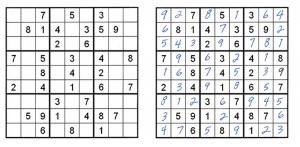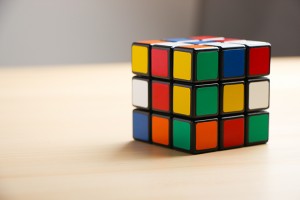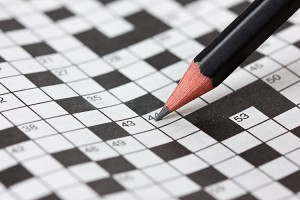International Sudoku Day
Monday, September 11th, 2023
Sudoku puzzles contain numbers that are already filled in by the puzzle’s author, called clues, which allow the puzzle to be solved. The sudoku on the left is unsolved, and the numbers in black are the clues. The sudoku on the right has been solved, and the numbers in blue are the answers for the puzzle.
Credit: World Book illustration
Saturday, September 9th (or 9/9 depending on how you write the date), was International Sudoku Day. Sudoku is a logic puzzle. A standard Sudoku consists of a grid of 81 squares, made up of nine rows and nine columns. The grid is further divided into nine 3-by-3 boxes. Each puzzle comes with some numbers in place. A player solves the puzzle by filling the grid with numbers so that every row, column, and box contains the digits 1 through 9 without repeating a number. If the puzzle was properly made, it has only one solution. The amount of nines involved in the puzzle is why today was chosen to celebrate the beloved pastime!
There are some variations of standard Sudoku, with smaller or larger grids. Also, because no arithmetic is needed for Sudoku, letters or symbols can be used in place of numbers. Puzzles that use letters are sometimes called Wordoku.
The earliest examples of Sudoku were number logic puzzles called Number Place, first published in the United States in 1979. A Japanese company called Nikoli began publishing the puzzles in 1984. The puzzles became popular in Japan, where they were called Su Doku—a shortened form of a Japanese phrase meaning, roughly, “the numbers can only be used once.”
The Times of London published its first Sudoku in November 2004. Soon, rival London newspapers followed The Times, each attempting to outdo the others by supplying more Sudoku, or by claiming to offer better Sudoku. Magazines of the puzzles first appeared in the United Kingdom early in 2005. Within months, Sudoku had gained widespread popularity. To give Sudoku a try, grab your local newspaper to find the daily Sudoku puzzle next to the crossword or download an application to play it on a phone or computer. If you are working on paper, it is best to start learning by using a pencil instead of a pen!





